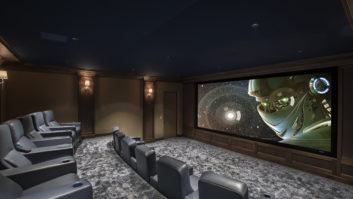
There are certain Starbucks locations where, if the line gets 10 or more people deep, there’s a roaming barista that take orders from the folks getting antsy toward the rear. This simple step of gaining a small commitment from someone at the back of the line resets their frustration timer (what one of my friends calls the “piss-off meter”). If you’re 8th or 9th in line without the roaming barista, you’re likely to bail. You’ve made no commitment; there’s nothing to lose by leaving and seemingly nothing to be gained by staying. We decided to take a page out of the Starbucks playbook and focus on taking projects out of the competitive bidding process early.
If we can be reasonably sure that a small financial commitment up front helps us better qualify the right kinds of clients, take jobs off the street, and build trust 80 percent of the time, why wouldn’t we move in that direction? I can list many reasons why we didn’t move sooner. The top of the list is inertia. We don’t change because we don’t have to change; no one defaults to change. That’s another reason why moving to a culture of charging for design has a higher barrier to entry and sets you apart competitively in the market. Instead of pushing clients away, they’re drawn towards your company like a moth to the flame.
Our CI businesses succeed and fail around commitments. Most of the time, we’re not great at gaining commitments from our clients. The client isn’t going to let us know how to handle them properly, and a lot of these steps don’t come naturally. Much of what we’ve implemented is downright awkward and requires the age old “three things” to improve (practice, practice, practice).
We try and take each new customer interaction through the same process. Some self-select out immediately and others are drawn closer. It’s still jarring when someone opts out quickly and we have to remind ourselves that they just did us a favor. They were never our customer and getting them to a “no” immediately meant we weren’t expending valuable engineering resources on designing a solution we’d never sell. Don’t get me wrong, this is hard. It’s hard saying no. It’s hard convincing your sales team that they should stay the course and not waiver.
It’s also hard to understand that our guidelines and standards are contextual. Every customer is different and sometimes the approach of gaining a commitment to collect a design retainer might rub some people the wrong way. Some of those people are the right kind of client, they just have a hangup about paying for design work. Most, however, are the wrong kind of client letting us know loud and clear upfront what to expect from the relationship. As the old saying goes, “It ends as it begins.”
Here’s an example of how we engineer the Starbucks mini-commitment into our workflow with an emailed recap to a client after an initial phone conversation:
Scott:
Looking forward to seeing you next week. Per our conversation, here’s a recap of our process:
- We’ll look at your project and then generate a budget range based on similar projects we’ve completed.
- We’ll work together to refine the budget to align with your expectations.
- After you’ve approved the budget range, we’ll invoice 4 percent of the low number. Ex: a budget range of $2000-$4000 would yield a design retainer of $80 (4 percent of $2000).
- We’ll produce a set of documents and drawings showing exactly how much you should plan on investing in the project and schedule a time with you to review them.
- You can then decide if you want Livewire to do the work immediately or whether you’d like to bid the job out using the documents we’ve engineered for you.
- If you decide to have Livewire do the work, we credit the 4 percent design retainer towards the project total.
-Henry
It’s not rocket science, but it does take commitment, confidence, and a willingness to see an early “no” as a win. One of my friends said, “Not all million dollars are created equal.” Wouldn’t you rather spend time working with clients who value your process and will produce great referrals?
Stay frosty, and see you in the field.
Click here for more business advice from Henry Clifford.







